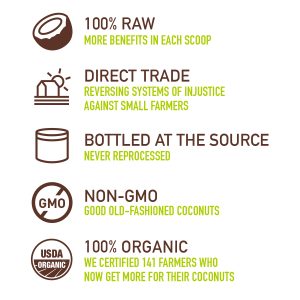In the heart of every home, the kitchen serves as a bustling hub of culinary creativity. However, amidst the joy of cooking, a significant challenge often lurks—kitchen waste. From vegetable peels to packaging materials, the kitchen can generate a substantial amount of waste that, if not managed mindfully, contributes to environmental issues. In this article, we explore practical strategies and innovative approaches to minimize kitchen waste, transforming the heart of the home into an environmentally friendly culinary haven.
1. Embrace the Art of Meal Planning:
Meal planning is a cornerstone of waste reduction in the kitchen. By thoughtfully organizing your weekly meals, you can purchase ingredients with intention and use them efficiently, minimizing the chances of food spoilage. Plan meals that allow for ingredient overlap, repurposing leftovers creatively to create new dishes. Meal planning not only reduces kitchen waste but also streamlines grocery shopping, saving time and money.
2. Optimize Ingredient Use:
Maximize the use of each ingredient to minimize waste. For example, when using citrus fruits, consider zesting the peel before juicing. Explore ways to use stems, leaves, and roots in recipes; vegetable scraps can be turned into flavorful broths, and fruit peels can be transformed into preserves or used for natural cleaning solutions. Being creative with ingredient utilization not only reduces waste but also adds depth and variety to your culinary creations.
3. Invest in a Compost System:
Composting is a powerful tool for diverting kitchen waste from landfills. Set up a compost system for fruit and vegetable scraps, coffee grounds, and eggshells. Compost adds valuable nutrients to soil and reduces the need for chemical fertilizers. For those without outdoor space, indoor composting systems and community composting programs offer sustainable alternatives. Composting turns kitchen waste into a resource, contributing to a circular and eco-friendly system.
4. Ditch Single-Use Plastics:
Single-use plastics are a major contributor to kitchen waste. Transition to reusable alternatives, such as glass containers, stainless steel utensils, and cloth bags. Eliminate plastic wrap by using reusable beeswax wraps or silicone lids. Choosing durable and eco-friendly materials not only reduces waste but also minimizes the environmental impact of plastic production and disposal.
5. Practice Conscious Grocery Shopping:
Conscious grocery shopping is a key aspect of waste reduction. Bring reusable bags, choose products with minimal packaging, and buy in bulk when possible. Purchase fresh produce without plastic packaging and opt for items with eco-friendly packaging materials. By making mindful choices at the grocery store, you contribute to a more sustainable food supply chain and reduce the influx of unnecessary packaging into your kitchen.
6. Utilize Leftovers Creatively:
Leftovers are an opportunity for culinary innovation. Get creative with repurposing meals to create new and exciting dishes. Turn yesterday’s roasted vegetables into a flavorful frittata, blend fruit leftovers into smoothies, and use excess grains to make hearty salads. Creative use of leftovers not only reduces kitchen waste but also elevates your cooking skills and palate.
7. Freeze Excess Ingredients:
When you find yourself with excess ingredients that may not be used immediately, freeze them for future use. Fresh herbs, fruits, and even cooked grains can be portioned and stored in the freezer. This not only extends the shelf life of ingredients but also provides a convenient stash of pre-prepared items, reducing the need for last-minute grocery runs and minimizing waste.
8. Mindful Cooking Portions:
Be mindful of portion sizes to avoid overcooking and generating unnecessary leftovers. Consider using smaller plates to help control portions and encourage mindful eating. If you regularly find yourself with excess food, adjust your recipes or invest in kitchen scales to accurately measure ingredients. By cooking with intention, you can minimize waste and foster a healthier approach to eating.
9. Create a DIY Cleaning Kit:
Kitchen waste extends beyond food items to include cleaning products. Reduce waste by creating your own DIY cleaning kit using simple ingredients like vinegar, baking soda, and lemon peels. Reusable cloths or sponges can replace disposable paper towels. This not only reduces waste but also eliminates exposure to harmful chemicals present in many commercial cleaning products.
10. Explore Zero-Waste Cooking Techniques:
Zero-waste cooking techniques emphasize utilizing ingredients entirely, leaving minimal scraps behind. Techniques such as root-to-stem cooking, where every part of a vegetable is used, and nose-to-tail cooking for meats, minimize waste and maximize flavor. By exploring these approaches, you not only contribute to waste reduction but also gain a deeper appreciation for the versatility of ingredients.
11. Support Local and Sustainable Food Sources:
Choosing local and sustainable food sources can have a significant impact on reducing kitchen waste. Local produce tends to have a shorter supply chain, reducing the environmental impact of transportation and storage. Support farmers’ markets, community-supported agriculture (CSA) programs, and local producers who prioritize sustainable practices. By making conscious choices, you contribute to a more resilient and eco-friendly food system.
12. Educate Yourself on Food Expiration Dates:
Understanding food expiration dates is crucial for minimizing kitchen waste. Many products are safe to consume beyond their printed dates. Educate yourself on the differences between “use by,” “sell by,” and “best before” dates. Trust your senses—smell, sight, and taste—before discarding items, and consider donating unexpired but surplus items to local food banks.
13. Create a Sustainable Kitchen Routine:
Establishing a sustainable kitchen routine involves incorporating eco-friendly practices into your daily cooking habits. This may include using washable cloth napkins instead of paper towels, investing in reusable kitchen tools, and adopting energy-efficient cooking methods. By integrating sustainability into your routine, these practices become second nature, contributing to a more environmentally friendly cooking environment.
14. Choose Energy-Efficient Appliances:
Energy-efficient appliances not only reduce electricity bills but also contribute to a more environmentally friendly kitchen. When upgrading kitchen appliances, look for Energy Star-rated options. Energy-efficient ovens, refrigerators, and dishwashers can significantly decrease the environmental impact of kitchen operations. Additionally, consider alternative cooking methods, such as induction cooktops, which are more energy-efficient than traditional stovetops.
15. Engage in Community Recycling Programs:
For items that cannot be composted or reused, engage in community recycling programs. Many communities offer recycling facilities for items like glass, plastic, and paper. Familiarize yourself with local recycling guidelines to ensure proper disposal. Recycling is a crucial component of waste management and plays a key role in reducing the environmental impact of kitchen waste.
In conclusion, transforming the kitchen into an eco-friendly haven involves a holistic approach that extends beyond recipes and cooking techniques. By embracing mindful practices, adopting sustainable alternatives, and fostering a connection to the entire lifecycle of ingredients, individuals can significantly minimize kitchen waste. The journey towards an environmentally friendly cooking environment is a collective effort that starts at home, making small but impactful changes that contribute to a healthier planet—one meal at a time.

















